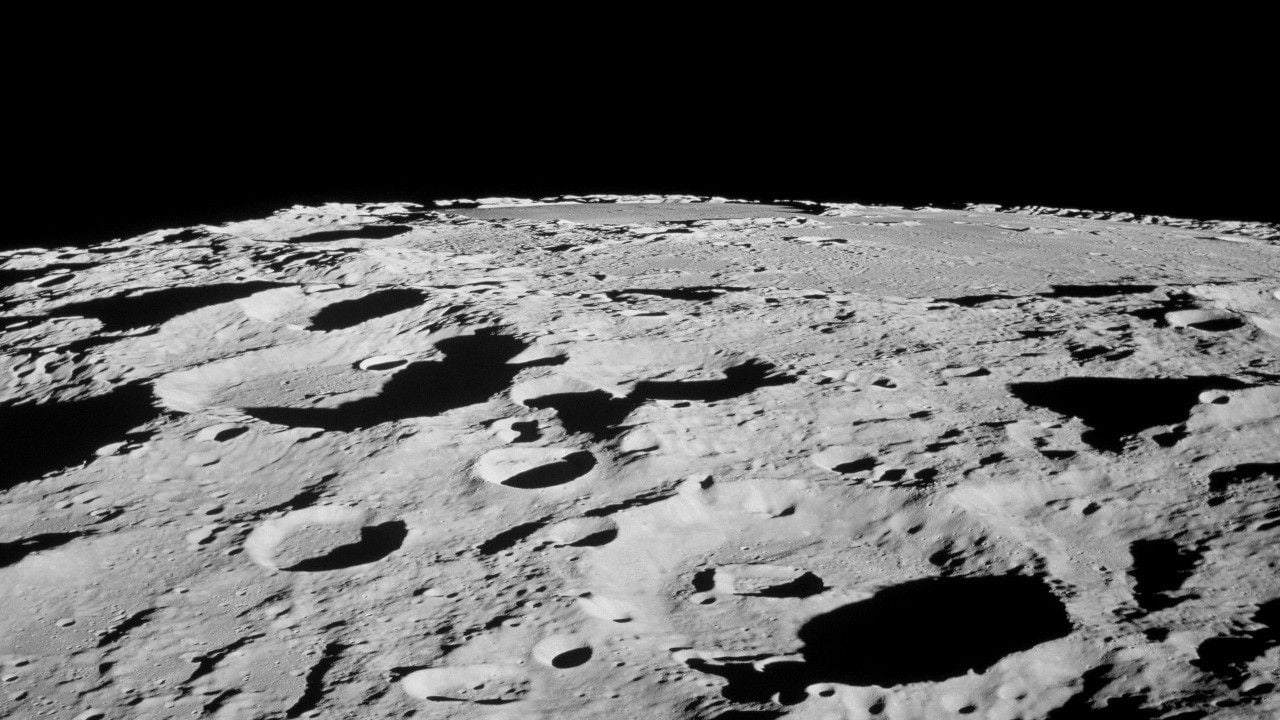The resources tucked away in asteroids promise to provide the building blocks of humanity’s expansion into space. However, accessing those resources can prove tricky. There’s the engineering challenge of landing a spacecraft on one of the low-gravity targets and essentially dismantling it while still remaining attached to it. But there’s also a challenge in finding ones that make economic sense to do that to, both in terms of the amount of material they contain as well as the ease of getting to them from Earth. A much easier solution might be right under our noses, according to a new paper from Jayanth Chennamangalam and his co-authors – mine the remnants of asteroids that hit the Moon.
Asteroids hitting the Moon is a relatively common occurrence, given the number of craters visible on its surface. According to the paper, larger craters (i.e. those 1km or more in diameter) can hold a significant amount of the material left over from the asteroid that caused them. Simulations back this up, showing that if the asteroid is going slowly enough, at around 12 km/s, a significant fraction of it survives the impact and is scattered around the crater. In some cases its disbursed amongst the breccia on the crater surface, but in some case its concentrated in the middle as a solid chunk of valuable material.
To estimate the number of craters that might have valuable resources hiding in them, the authors modified an equation used to estimate the number of ore-bearing asteroids that was originally developed by one of their own (Martin Elvis of Harvard). In the original equation, Dr. Elvis defined 5 terms that, when multiplied together, gave the total number of near-Earth asteroids that could be economically mined for resources.
Fraser discusses the crazy idea of intentionally hitting the Moon with an asteroid.
First is the likelihood that the asteroid is of a type that actually contains the valuable material. For platinum group metals (PGMs), that would be an M-type asteroid – typically considered to be about 4% of the total asteroid population, whereas for water it could be a C-type, which is slightly more common at 10%. A second factor is what percentage of those asteroids are rich enough to hold a significant amount of material – which the paper estimated at 50% for the M-types and 31% for the C-types.
In Dr. Elvis’ original formula, the next factor is the probability that the asteroid is accessible in space, given the delta-v required to reach it. However, the new paper modifies this factor, since every crater on the Moon is accessible with about the same amount of delta-v. The new factor represents the probability that the asteroid survives impact with the Moon, which is calculated at about 25% for the M-types and a lower 8.3% for C-types, given that the water that hold C-types together might be lost from the impact of heating.
Another factor, near and dear to any engineer’s heart, is the likelihood that the engineering challenges of recovering the material are achievable. Every engineer will be glad to hear that, in both papers, this factor is treated as 100% – the astrophysicists and planetary scientists obviously have faith that engineers can overcome the difficulty of mining both on asteroids and on the Moon.
Fraser discusses the Lunar south pole – home to many craters in its own right – and one of the places astronauts might first land.
The last factor is again different between the original and the new paper, but serves similar purposes. In the original, it was meant to estimate the total number of asteroids that were large enough to be profitable to mine, while in the new one it represents the number of craters large enough to have a significant amount of recoverable material in it. Again, for water-bearing C-types, only smaller crater sizes were considered as they are known to create smaller craters.
With these estimates of factors, the new paper calculates that there are orders of magnitude more ore-bearing craters on the Moon than there are recoverable near-Earth asteroids with significant amounts of mineable material. So, it sounds like it might be better to focus on lunar mining than on asteroid mining.
However, there are some caveats – obviously any engineer will tell you that economically recovering material from 100% of craters is not feasible, so the assumption of a 100% success rate isn’t feasible. Considerations like impact dispersal and the speed with which the asteroid hits the lunar surface also have major effects on the economic viability of how easy it is to recover those materials. And there’s the consideration of lunar gravity – while it is a boost to making the engineering efforts of recovery easier, it serves as a hindrance when trying to get the mined material back into space.
Ultimately, the suggestion of the paper is to put a remote-sensing satellite in orbit with a high resolution camera and see if some of the assumptions about the availability of material in craters is true. If it is, and if there’s enough economic demand for that material, mining the Moon rather than asteroids first begins to become an even more exciting proposition.
Learn More:
J. Chennamangalam et al. – On ore-bearing asteroid remnants in lunar craters
UT – Could You Find What A Lunar Crater Is Made Of By Shooting It?
UT – NASA to Probe the Secrets of the Lunar Regolith
UT – One Crater on the Moon is Filled with Ice and Gas that Came from a Comet Impact
